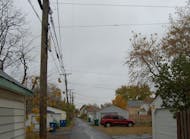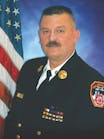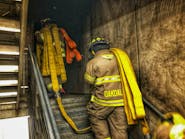The Five Rights of the First Line
In the fire service, when it comes to suppression, we have a lot of grey area in the way we do business. We use terms like "situationally dependent" and "every fire is different." The reason we use these terms is because they are true.
We have an ever-evolving and incredibly dynamic battlefield where too many hard rules limit the ability for thinking firefighters to find solutions to unique problems. Unfortunately, terms like these also give our less motivated firefighters a cop-out when it comes to possessing practical and applicable job knowledge. Even worse, it fails to provide a framework for younger, less-experienced firefighters to reference when their time comes on the nozzle.
On the other side of the job, Emergency Medical Services (EMS) has many hard rules and protocols that our clientele literally live and die by, and for the most part, it's worked out pretty well. It provides us the ability to have a progression system of rules to work within to accomplish our tasks in a high-stakes situation. Having this framework and system of guidelines provides peace of mind and reassurance when making critical decisions in demanding environments.
Perhaps there is room in the fire suppression playbook for us to borrow some of that framework and add a few hard rules to help establish a better understanding of that same progression style of thinking on the fireground that we have knowingly or unknowingly been using the entire time.
When we step on to the scene of a medical call, whether its a stubbed toe or a cardiac arrest, our first order of business is our assessment. We do this every time without hesitation, and with confidence in the tried-and-true system we have been working with our entire careers. Most of us are doing this almost subconsciously, but when you stop and really think, you are still assessing this patient just like you always have.
You are then choosing your treatment modality, and if that modality calls for a medication, you again call upon the progression system that confirms for you that you have made the right decision, the 5 rights of medicine. Well, our patient now is this burning structure. Our patient is sick and needs its medication: water.
The 5 Rights of Medicine—right patient, medication, dose, route, and time—are a standard in EMS. Who in the firehouse cannot recite these without hesitation? Nobody, so why shouldn't our water delivery knowledge be the same?
1. Right gallons per minute
What is our fire flow for this job, and what delivery method do we need to get the adequate GPM? Whether we're using length times width divided by three, or total square footage divided by three, it doesn't really matter which formula you use as long as it's in our size-up process, and we're in the right ballpark.
Getting in the weeds with our fire-flow calculation can cause paralysis by analysis. What is the benefit of saying or thinking that "this is a 1,730 square-foot, single-family dwelling." Maybe it's more straightforward math if houses are 1,500, 3,000 or 6,000 square feet or commercial occupancies. The worst case is we overestimate how much water. Are we really worried about the 160 GPM from the 7/8th versus 185 GPM from the 15/16th? Maybe we should have pulled the 2½.
Understanding how to calculate the approximate GPM needed will set the tone for the next four rights and help not only guide but give us confidence in our decisions.
2. Right line
After we've done our fire-flow calculation and settled on our desired GPM now, we choose our weapon. Deck gun, 2½ , 1¾ , water can? Big fire big water, so we're trying to overwhelm the BTUs with the GPMs, right? Don't make this a fair fight.
"You can dry (it) out, you can't unburn it" - Curt Isakson
If we're going big, let's take into consideration our personnel power and our personal power? We all can't be staffed like FDNY, so for the smaller departments with lower response numbers offensively, can we or I move this line to fight this fire aggressively? Yes, a 2½ can be an offensive option given the right personnel and personal power.
On the other side of the ball (defensive), can I reposition quickly if needed?
"Don’t pull the line for right now, pull the line for 5 minutes from now” - Sean Slamon
If this fire is working, how hard will it be working when I get water on it? Not every fire requires a 2½, but if it does, these should be some of our considerations.
3. Right nozzle
If we have elected to use our deck gun or our 2½ with stacked tips, do we have the correct tip for our fire flow? This is why it is crucial to know with absolute certainty what the GPM, pressure at the tip and nozzle reaction is on every line and nozzle combo on our engine, as well as how much water is in the tank when we arrive on the scene.
It’s a concern when we see firefighters that don’t have this information embedded in their minds or (even worse) feel like this is the engineer’s job. This information is vital to the success of the nozzleman. Do we have an adequate water supply to support big water options? Are we taking our 15/16 or 7/8 smoothbore? Has or will this fire make its way into the attic or void spaces where the versatility of our fog nozzle will benefit us?
Also, back to personal power, can we handle our selection's nozzle reaction?
4. Right stretch
Where’s our spot? What’s the distance to the seat of the fire, not just the front door? If we have pre connected hose lays, how long are they, and how are they loaded? How much dead load do we carry in the bed? Do we need a trunk line and the hotel packs? Knowing your rig's capabilities and your attack package makes these snap decisions that much easier and makes us that much better.
Then, is this a straight pull, shoulder load, ally/L, etc.? Are we proficient at all of these pulls? The answer better be HELL YES I AM or go back to the private ambulance company you came from. A beautiful hose stretch on the training grounds shows proficiency. A beautiful stretch on the fireground inspires confidence in not only everyone operating on that scene but also the citizen that we swore our oath to protect.
The fifth and final right of the first line is...
5. Right now!
Through training, we need to be so proficient with these physical actions and mental processes that we are getting to work the moment the air brake hits. The public expects and deserves that. As the back-seat firefighters, we signed up to do this, so we should have the knowledge, skill and desire to do it well. Our Company Officers have other things to do rather than hold our hand and make these decisions for us.
By now, you may have noticed we have asked more questions than we have provided answers. The questions hopefully encourage all of us to better understand our current decision-making process or open our eyes to the need for a process.
The way we do business varies, so bear in mind this is not the reinvention of the wheel. This is the tightening of the spokes, the truing of the wheels with the anticipation of moving these tried-and-true practices forward. These are hopefully thought-provoking questions to help inspire confident and competent decision making when the need for prompt, effective and efficient action is paramount.





